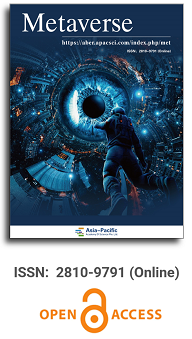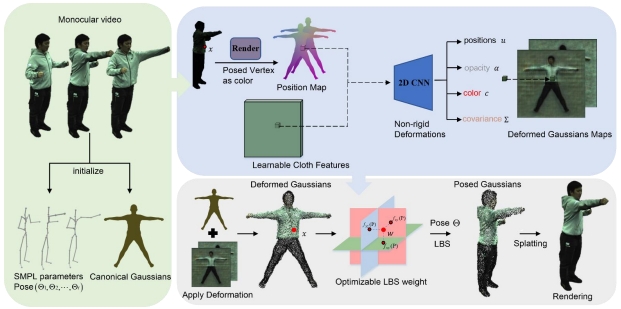
Asia Pacific Academy of Science Pte. Ltd. (APACSCI) specializes in international journal publishing. APACSCI adopts the open access publishing model and provides an important communication bridge for academic groups whose interest fields include engineering, technology, medicine, computer, mathematics, agriculture and forestry, and environment.



Artificial intelligence (AI) within manufacturing: An investigative exploration for opportunities, challenges, future directions
Vol 5, Issue 2, 2024
Download PDF
Abstract
Artificial intelligence (AI) stands as a potent catalyst for revolutionizing manufacturing, promising unprecedented efficiency, agility, and resilience. This research embarks on an investigative journey to dissect the multifaceted landscape of AI in manufacturing, aiming to unravel its current status, intrinsic challenges, and prospective pathways. This research unveils the intricate relationship between AI technologies and manufacturing processes across diverse domains. Examining various domains, including system-level analysis, human-robot collaboration, process monitoring, diagnostics, prognostics, and material-property modeling. The research also reveals AI’s transformative potential in optimizing manufacturing operations, enhancing decision-making, and fostering innovation. By dissecting each domain, the research illuminates how AI empowers manufacturers to adapt to dynamic market demands and technological advancements, ultimately driving sustainable growth and competitiveness. Moreover, it also examines the evolving dynamics of human-robot collaboration within manufacturing settings, recognizing AI’s pivotal role in facilitating seamless communication, shared understanding, and dynamic adaptation between humans and machines. Through an exploration of AI-enabled human-robot collaboration, this research underscores the transformative power of symbiotic relationships in reshaping the future of manufacturing. While highlighting opportunities, it acknowledges the myriad challenges accompanying AI integration in manufacturing, such as data quality issues, interpretability of AI models, and knowledge transfer across domains. By addressing these challenges, the research aims to pave the way for more resilient AI-driven manufacturing systems capable of navigating complex market landscapes and technological disruptions. This research sheds light on AI’s transformative potential in manufacturing, inspiring collaborative efforts and innovative solutions that will propel the industry forward into a new era of possibility and prosperity.
Keywords
References
- Tech27. Reducing downtime using AI in Oil and Gas. Available online: https://tech27.com/resources/reducing-downtime-using-ai-iot-in-oil-gas-exploration-and-production/ (accessed on 30 May 2024).
- Sallomi P. Artificial Intelligence Goes Mainstream. Available online: https://deloitte.wsj.com/cio/artificial-intelligence-goes-mainstream-1438142473 (accessed on 30 May 2024).
- Schatsky D, Muraskin C, Gurumurthy R. Cognitive technologies: The real opportunities for business. Available online: https://www2.deloitte.com/tr/en/pages/technology-media-and-telecommunications/articles/cognitive-technologies.html (accessed on 30 May 2024).
- Krauß J, Hülsmann T, Leyendecker L, Schmitt RH. Application Areas, Use Cases, and Data Sets for Machine Learning and Artificial Intelligence in Production. In: Liewald M, Verl A, Bauernhansl T, et al. (editors). Production at the Leading Edge of Technology. Lecture Notes in Production Engineering. Cham: Springer International Publishing; 2023. pp. 504-513. doi: 10.1007/978-3-031-18318-8_51
- What Does Collaborative Robot Mean? Available online: https://blog.robotiq.com/what-does-collaborative-robot-mean (accessed on 30 May 2024).
- Monostori L, Kádár B, Bauernhansl T, et al. Cyber-physical systems in manufacturing. CIRP Annals. 2016; 65(2): 621-641. doi: 10.1016/j.cirp.2016.06.005
- Wuest T, Weimer D, Irgens C, et al. Machine learning in manufacturing: advantages, challenges, and applications. Production & Manufacturing Research. 2016; 4(1): 23-45. doi: 10.1080/21693277.2016.1192517
- Lu SCY. Machine learning approaches to knowledge synthesis and integration tasks for advanced engineering automation. Computers in Industry. 1990; 15(1): 105-120. doi: 10.1016/0166-3615(90)90088-7
- Jourdan N, Longard L, Biegel T, et al. Machine Learning for Intelligent Maintenance and Quality Control: A Review of Existing Datasets and Corresponding Use Cases. Hannover: publishing; 2021. doi: 10.15488/11280
- Azavedo A. KDD, SEMMA and CRISP-DM: A parallel overview. Available online: https://www.semanticscholar.org/paper/KDD%2C-SEMMA-and-CRISP-DM%3A-a-parallel-overview-Azevedo-Santos/6bc30ac3f23d43ffc2254b0be24ec4217cf8c845 (accessed on 30 May 2024).
- Krauß J, Dorißen J, Mende H, et al. Machine Learning and Artificial Intelligence in Production: Application Areas and Publicly Available Data Sets. In: Wulfsberg JP, Hintze W, Behrens BA (editors). Production at the leading edge of technology. Berlin, Heidelberg: Springer; 2019. pp. 493-501.
- Panayotov V, Chen G, Povey D, et al. Librispeech: An ASR corpus based on public domain audio books. In: Proceedings of the 2015 IEEE International Conference on Acoustics, Speech and Signal Processing (ICASSP). pp. 5206-5210.
- OpenAI. GPT-4 Technical Report. arXiv. 2023; arXiv:2303.08774.
- Arinez JF, Chang Q, Gao RX, et al. Artificial Intelligence in Advanced Manufacturing: Current Status and Future Outlook. Journal of Manufacturing Science and Engineering. 2020; 142(11). doi: 10.1115/1.4047855
- PWC. Pwc’s Global Artificial Intelligence Study: Sizing the Prize. Available online: https://www.pwc.com/gx/en/issues/data-and-analytics/publications/artificial-intelligence-study.html (accessed on 30 May 2024).
- Mozaffar M, Liao S, Xie X, et al. Mechanistic artificial intelligence (mechanistic-AI) for modeling, design, and control of advanced manufacturing processes: Current state and perspectives. Journal of Materials Processing Technology. 2022; 302: 117485. doi: 10.1016/j.jmatprotec.2021.117485
- Wang L. From Intelligence Science to Intelligent Manufacturing. Engineering. 2019; 5(4): 615-618. doi: 10.1016/j.eng.2019.04.011
- Chui L, Kamalnath V, McCarthy B. An Executive’s Guide to AI, McKinsey. Available online: https://www.mckinsey.com/business-functions/mckinsey-analytics/our-insights/an-executives-guide-to-ai (accessed on 30 May 2024).
- Cardon D, Cointet JP, Mazières A. Neurons Spike Back: The Invention of Inductive Machines and the Artificial Intelligence Controversy. Reseaux. 2018; 5(211): 173-220.
- LeCun Y, Bengio Y, Hinton G. Deep learning. Nature. 2015; 521(7553): 436-444. doi: 10.1038/nature14539
- Lee J, Davari H, Singh J, et al. Industrial Artificial Intelligence for industry 4.0-based manufacturing systems. Manufacturing Letters. 2018; 18: 20-23. doi: 10.1016/j.mfglet.2018.09.002
- Li B, Hou B, Yu W, et al. Applications of artificial intelligence in intelligent manufacturing: a review. Frontiers of Information Technology & Electronic Engineering. 2017; 18(1): 86-96. doi: 10.1631/fitee.1601885
- Zhong RY, Xu X, Klotz E, et al. Intelligent Manufacturing in the Context of Industry 4.0: A Review. Engineering. 2017; 3(5): 616-630. doi: 10.1016/j.eng.2017.05.015
- Sharp M, Ak R, Hedberg T. A survey of the advancing use and development of machine learning in smart manufacturing. Journal of Manufacturing Systems. 2018; 48: 170-179. doi: 10.1016/j.jmsy.2018.02.004
- Godfrey C, Brown D, Emerson T, et al. On the Symmetries of Deep Learning Models and their Internal Representations. In: Proceedings of the Thirty-fifth Conference on Neural Information Processing Systems; 2022.
- Courts N, Kvinge H. Bundle Networks: Fiber Bundles, Local Trivializations, and a Generative Approach to Exploring Many-to-one Maps. In: Proceedings of the International Conference on Learning Representations; 2021.
- Howland S, Kassab L, Kappagantula K, et al. Parameters, Properties, and Process: Conditional Neural Generation of Realistic SEM Imagery Toward ML-Assisted Advanced Manufacturing. Integrating Materials and Manufacturing Innovation. 2023; 12(1): 1-10. doi: 10.1007/s40192-022-00287-y
- Green SA, Billinghurst M, Chen X, et al. Human-Robot Collaboration: A Literature Review and Augmented Reality Approach in Design. International Journal of Advanced Robotic Systems. 2008; 5(1): 1. doi: 10.5772/5664
- Verma A, Kumar S. Cognitive robotics in artificial intelligence. In: Proceedings of the 2018 8th International Conference on Cloud Computing, Data Science & Engineering (Confluence). pp. 65-70.
- Duan F, Tan JTC, Arai T. A New Human-Robot Collaboration Assembly System for Cellular Manufacturing. In: Proceedings of the Chinese Control Conference; 2011; Yantai, China. pp. 5468-5473.
- Marvel JA, Falco J, Marstio I. Characterizing Task-Based Human–Robot Collaboration Safety in Manufacturing. IEEE Transactions on Systems, Man, and Cybernetics: Systems. 2015; 45(2): 260-275. doi: 10.1109/tsmc.2014.2337275
- Robla-Gomez S, Becerra VM, Llata JR, et al. Working Together: A Review on Safe Human-Robot Collaboration in Industrial Environments. IEEE Access. 2017; 5: 26754-26773. doi: 10.1109/access.2017.2773127
- Nikolaidis S, Lasota P, Rossano G, et al. Human-robot collaboration in manufacturing: Quantitative evaluation of predictable, convergent joint action. In: Proceedings of the IEEE ISR 2013. pp. 1-6.
Supporting Agencies
Copyright (c) 2024 Zarif Bin Akhtar
License URL: https://creativecommons.org/licenses/by/4.0/

This site is licensed under a Creative Commons Attribution 4.0 International License (CC BY 4.0).

Prof. Zhigeng Pan
Professor, Hangzhou International Innovation Institute (H3I), Beihang University, China

Prof. Jianrong Tan
Academician, Chinese Academy of Engineering, China
Conference Time
December 15-18, 2025
Conference Venue
Hong Kong Convention and Exhibition Center (HKCEC)
...
Metaverse Scientist Forum No.3 was successfully held on April 22, 2025, from 19:00 to 20:30 (Beijing Time)...
We received the Scopus notification on April 19th, confirming that the journal has been successfully indexed by Scopus...
We are pleased to announce that we have updated the requirements for manuscript figures in the submission guidelines. Manuscripts submitted after April 15, 2025 are required to strictly adhere to the change. These updates are aimed at ensuring the highest quality of visual content in our publications and enhancing the overall readability and impact of your research. For more details, please find it in sumissions...






.jpg)
.jpg)

